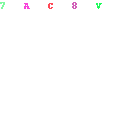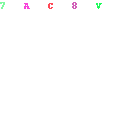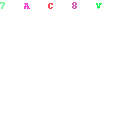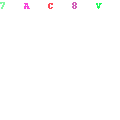 Energy Efficiency
Energy Efficiency
Concerns about improving efficiency of energy usage will spur upgrades of windows to newer, insulated glass products. Housing built today is almost twice as energy efficient than as that which was constructed just 30 years ago. Many older homes were originally outfitted with inefficient, heat-Leaking single-pane windows. Escalating heating and cooling costs, especially as a result of the nation’s recent energy shortages, are spurring homeowners to invest in an entirely new class of energy-efficient products that advancing technology is making ever-more available.
Window performance is based on two main dynamics: the U-factor and the Solar Heat Gain Coefficient (SHGC). The U-factor expresses the rate of heat transfer either from the home interior or exterior through windows, doors, or skylights. A lower U-factor means Less heat is transferred, and the product is more energy efficient. The SHGCrepresents the extent of heat gain from the sun, with a lower number equivalent to a smaller heat gain, and more energy efficiency.
 Low-E Glass
Low-E Glass
One of the most significant contributions to enhanced window performance is the introduction of low-E glass, which minimizes interior heat loss (or gain) through the window surface.
The science behind low-e (emission) glazing is a microscopic coating of metal or metallic oxide applied to the glass surface, typically to the side facing the air space in a multiple-pane window. The metallic layer drastically reduces the airflow through the glass, keeping interior temperatures stable without the need for mechanical heating or cooling, and reducing energy consumption. Effective in all seasons, the coating serves both barrier and containment functions. In other words, when the mercury spikes, low-e glass keeps undesirable outdoor heat from Leaking in through the windows (acting as a barrier). When temperatures plummet, it reflects heat back into the home (acting as a force for containment).
Thanks to its insulating value, low-e glass can transform large, expansive windows from an impractical indulgence to a carefree amenity, literally opening up the home to natural light and creating the opportunity for a host of new window configurations.
For warmer climates, spectrally selective glazing is another type of low-e treatment specially engineered to Let in natural light while blocking out solar heat.
The economics of low-e glass, while perhaps not sufficient to offset the cost of a whole-house window retrofit, are nevertheless significant. One study reported by a researcher in the Energy Analysis Program at The Lawrence Berkeley Laboratory calculated that in a house with a total window area of 250 square feet, low-e windows could save the homeowner approximately $67 in heating costs in one month.
Of course, there are several variables in the equation, ranging from the gas thermo cost ($0.65, in this example) to the heating efficiency of the furnace (50 percent) to the average indoor and outdoor temperatures (68 degrees F and 38 degrees F, respectively) to the window specifications (double-pane, low-e [E= 0.10] argon-filled, wood-frame windows with non-metal spacers vs. single-pane aluminum-frame windows).
http://www.efficientwindows.org/lowe.cfm
 Energy Star and Industry Ratings
Energy Star and Industry Ratings
Prompted by programs such as the government’s ENERGY STAR initiative, originally launched in 1992 to spotlight products that reduce greenhouse gas emissions and now sponsored by the Environmental Protection Agency and the Federal Department of Energy, homeowners look to energy-efficient windows to allay their concern for the environment as well as heating and cooling costs.
ENERGY STAR qualified windows, doors, and skylights have been tested and certified to ensure utility bills that are up to 15 percent lower, as well as to protect interior furnishings against solar damage. All ENERGY STAR qualified window products bear a label from the National Fenestration Rating Council (NFRC), which provides independent energy performance ratings by product for U-factor, SHGC, and Visible Transmittance. The NFRC, a non-profit, public/private industry organization, provides consistent ratings on window, door and skylight products, with the goal of presenting accurate information to measure and compare the energy performance of fenestration options. Consumers are assured that by purchasing an ENERGY STAR qualified window product they will be able to increase comfort and savings.
Recommended U-factors and SHGC vary according to the climate. For example, in northern regions, where heating constitutes the primary energy expenditure, windows should have a U-factor of .35 or Less, with any SHGC. In warmer central regions, where both heating and cooling come into play, windows should possess a U-factor of 0.40 or Less and an SHGC of 0.55 or Less. In southern climates, the U-factor should be 0.75 or Less, while the SHGC should be 0.40 or Less.
Given today’s geopolitical climate, with the prospect of global conflict pushing fuel prices up to unprecedented Levels, consumers have more reason than ever to consider window replacement as an energy-conservation measure. A spiking utility bill is a strong incentive for the homeowner to go window-shopping.
http://www.energystar.gov/index.cfm?c=windows_doors.pr_windows
 Energy Regulations
Energy Regulations
Another driving force behind the energy conservation groundswell is the regulatory climate governing the construction industry. Energy codes are continually updated to mandate a minimum degree of energy efficiency in new buildings. As innovations such as low-e glass penetrate the market, they are gradually incorporated into the energy code, constantly raising the bar for efficiency. By the time a technique is codified, it is generally in widespread use and has proven cost-effective. Those builders who lag behind stand out as offering lower-end products and not measuring up to mainstream standards.
http://www.nfrc.org/nationalcodes.aspx
